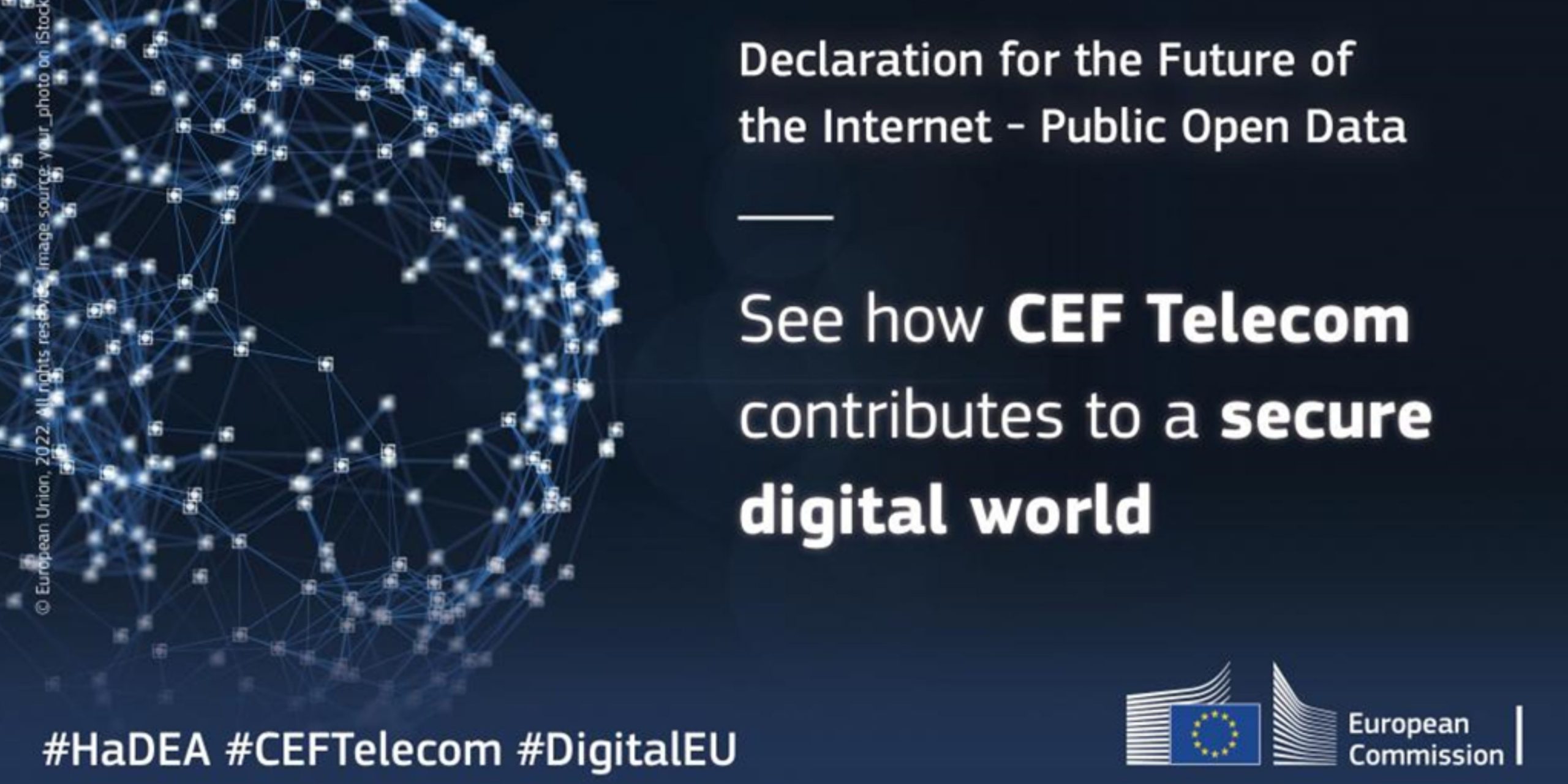On 27 April the European Union, the United States, and several international partners have proposed a Declaration for the Future of the Internet, setting out the vision and principles of a trusted Internet. It is about the future for the Internet that is open, free, global, interoperable, reliable and secure while protecting and respecting human rights online and across the digital world.
The Connecting Europe Facility (CEF) Telecom programme contributes to this vision by supporting various Digital Service Infrastructures (DSIs) projects resulting in faster and more efficient online public and cross-border services. Public Open Data, Cybersecurity or Safer Internet are examples of DSIs that support the development of a safe and open Internet.
Declaration for the future of the Internet and Public Open Data
Project examples:
- TRAFAIR: the project brought together 10 partners from Italy and Spain to develop services that combine air quality, weather conditions, and traffic flowstoprovide estimations of the levels of pollution resulting from varying traffic flow conditions. It allowed them to make future predictions based on the same parameters, as well as a set of mobile apps, online apps, and map visualisation tools with real-time information of the estimated levels of pollution in urban areas. The service has been deployed in 6 European cities and related datasets (including metadata) have been published on local and national data portals, which are then harvested by the data.europa.eu portal.
- GRAPEVINE: this project aims at providing open information to farmers potentially affected by the diseases that affect grape yards, so they can apply more effective treatments. The GRAPEVINE project brings together 7 partners from Spain and Greece. Through the use of existing open data, High Performance Computing, and data infrastructures, is creating predictive models based on Deep Learning techniques to improve the prevention and control of mildew and other grapevine diseases in the wine cultivation sector.
- SPOTTED: this project aims to provide an innovative solution based on the integration and customised processing of massive open data collections, including Earth Observation (EO) data, to monitor and support decision makers in the field of green areas management. SPOTTED will integrate data provided by open data portals from the public administrations involved, the European Data Portal and Copernicus, including real-time data captured by sensors. In particular, they will apply self-developed AI algorithms to Copernicus and a combination of other non-EO open data (such as pollution data, urban and extra urban traffic data, meteorological data, local strategic plans, social media data, socio economic data, etc.) to support decision making.
- SALTED: the project aims to add value to existing datasets and data-streams by enriching them through the application of the principles of linked-data, semantics and Artificial Intelligence (AI). Concretely, heterogeneous data sources such as Internet of Things (IoT) deployments, open data portals, websites and/or social media will be integrated and linked so that enriched meta-data is generated around these data sources and data contextualization is leveraged. The enriched data will foster the development of innovative services in various domains, such as smart cities and smart agriculture.
- GreenMov: the main goal of the project is the definition of harmonised data models for green mobility and the development of advanced green mobility services, such as traffic flow management, smart management of free-floating mobility, shared mobility and environmental impact.
To achieve this, GreenMov will define and extend Smart Data Models and Core Vocabularies for green mobility, and will integrate data provided by open data portals from the public administrations (European Data Portal and Copernicus) involved in the project. The data models, services and the architecture will be validated in three pilots: Nice, Flanders and Murcia/Molina. As a result, the project will contribute to making the concerned cities and regions more environmentally and socio-economically sustainable and valuable. - VariOT (Vulnerability and Attack Repository for IoT): the development of the Internet of Things (IoT) raises crucial questions on the security of connected objects, which are particularly vulnerable to attacks. VARIoT aims at creating a service providing actionable information regarding Internet of Things (IoT) devices which can be processed manually (by analysts) or automatically (by detection/prevention systems, firewalls, etc.) and that can be used to ensure their cybersecurity. Relevant data will be made available, including real-time publication, through the European Data Portal (EDP), as well as through other interfaces, such as Malware Information Sharing Platform (MISP), and via Shadowserver’s free daily remediation feeds.
Interesting links
Discover CEF Telecom 2014-2020 projects
Source: European Commission I HADEA (https://bit.ly/3RlTceg)
